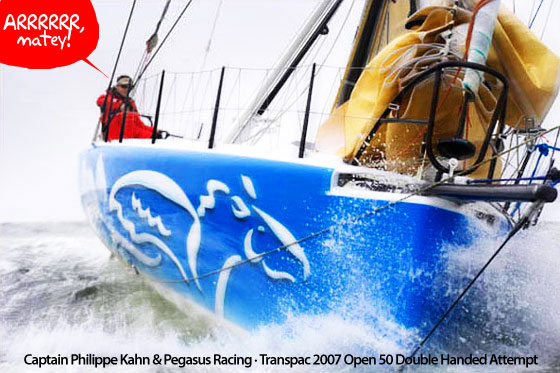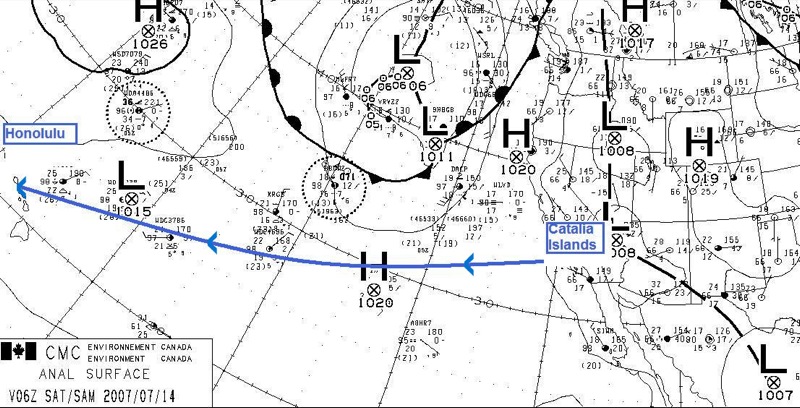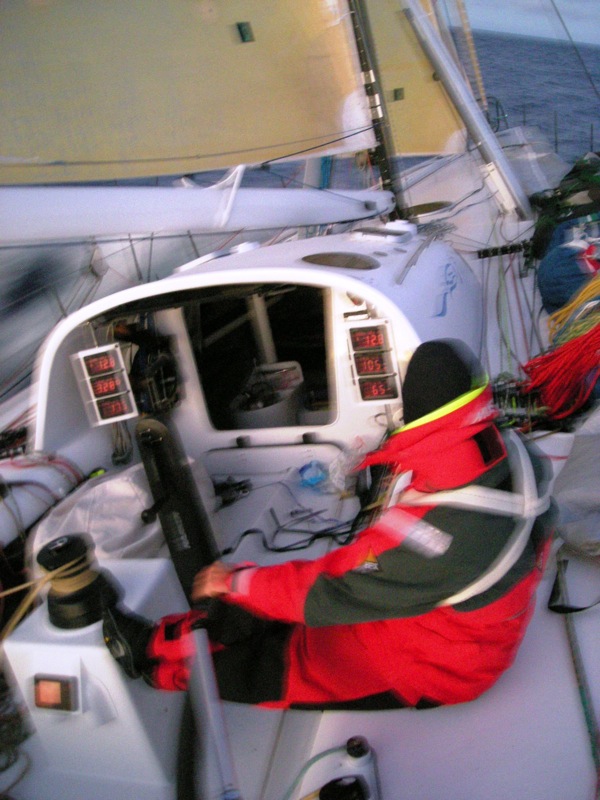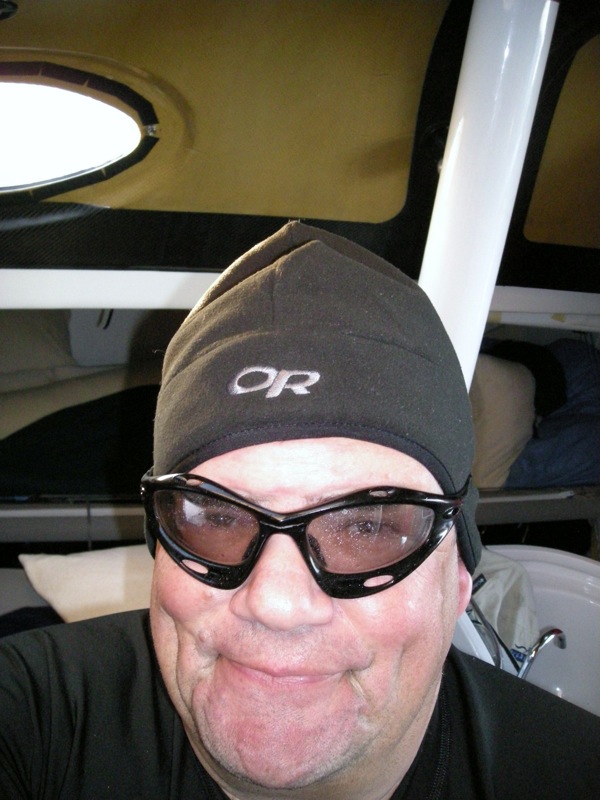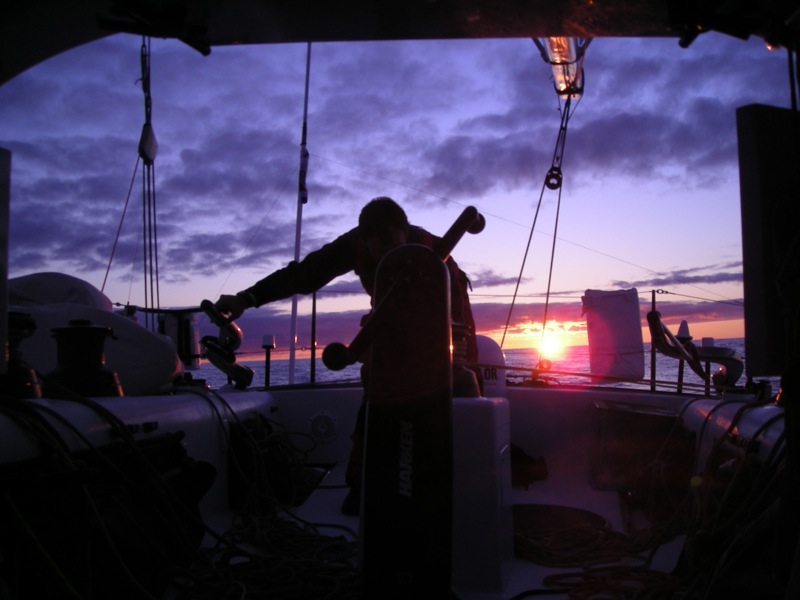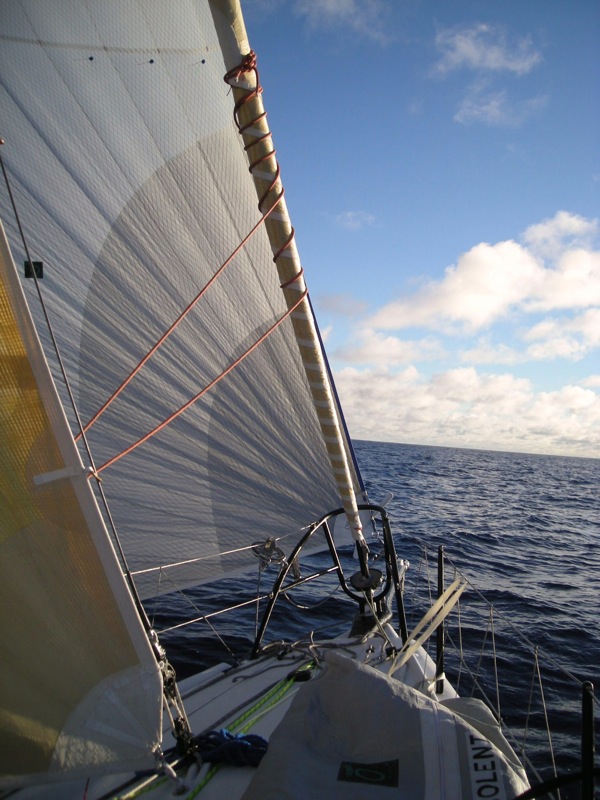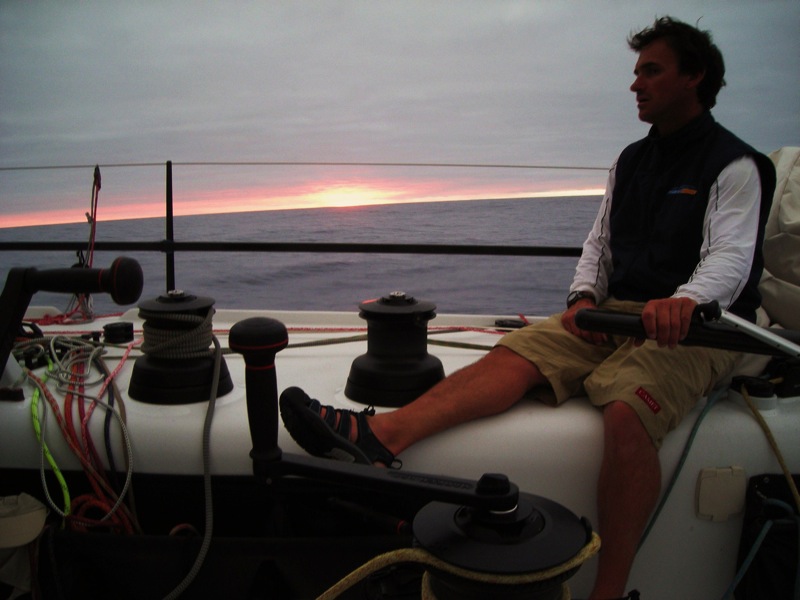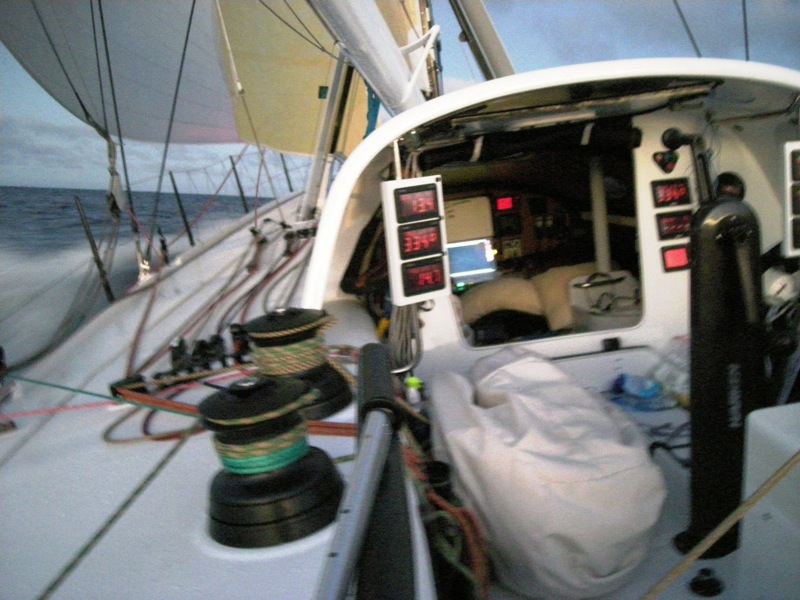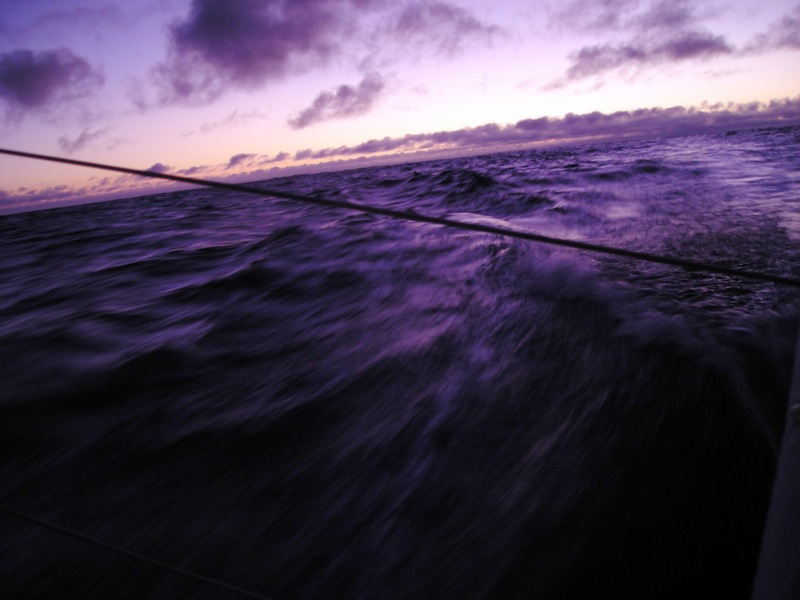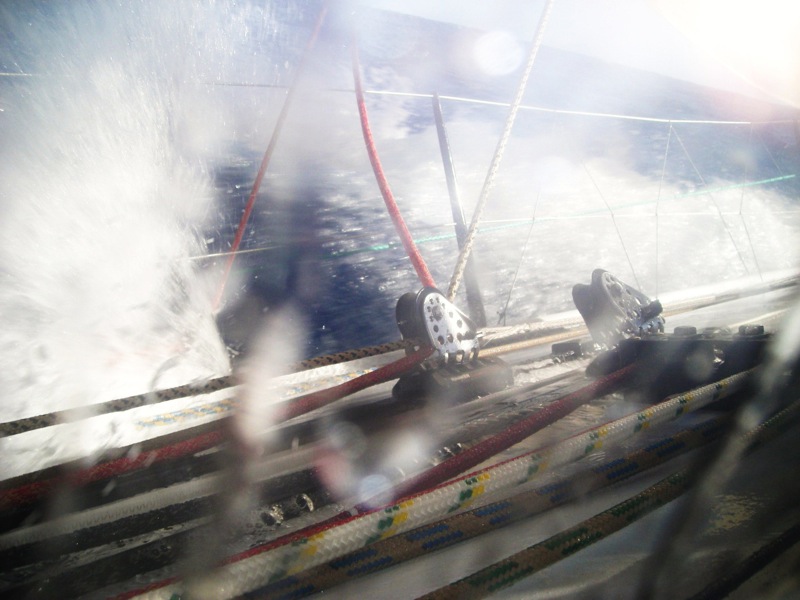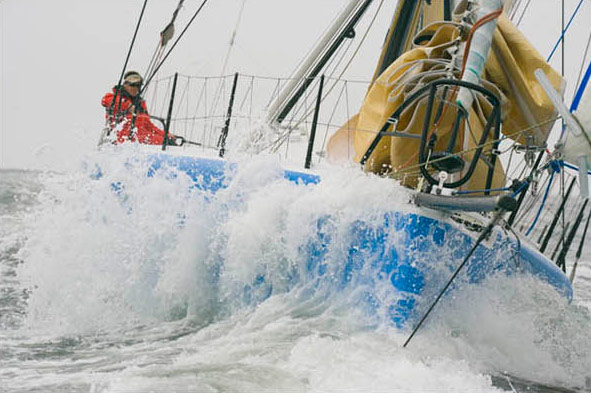Emailing the Father of the Camera Phone as He Sails Across the Great Blue Pacific
“Your uncle Invented the Camera Phone!?” is what I said before a friend introduced me to Philippe Kahn. Back in 1997, Kahn hacked together a camera phone to easily send photos of his newborn daughter to family and friends. That piece of lore is gadget history 101. What many people don’t realize is that Philippe is also a fanatic sailor. We’re not talking cushy megayachts: Kahn engages in top level competitive racing, in 2003 beating Roy Disney to win the Transpac race from Long Beach to Hawaii. As we speak, he’s on the same journey in a smaller, lithe, double-handed (two man) on the Team Pegasus Open 50, making a play for the speed record. We just emailed him…and mid race, he wrote back.
It’s his tenth crossing, but apparently, the weather is trickier than on his other trips, with two tropicals storms forming in the area. Despite all that, he answered our questions, from the middle of the great blue Pacific Ocean, about the boat, and how exactly you stay sane and connected in the open sea.
How do you stay connected out in the ocean?
It’s hard to type… Small boat, big motion, big fingers… So excuse the typos etc…There are several satellite communications systems; weight and power consumption matter a lot. The practical ones for a project like this are the Iridium network and the Inmarsat Fleet-33 system. The bandwidth is limited, to say the least: 2400 baud for Iridium, 9600 baud for F-33s, but Iridium is far more reliable and completely global. The challenge is also that these systems lose their connections. And of course, with that kind of latency, all standard email and download systems fail and get into endless loops. Latency just kills them as they try to eternally restart operations that never complete. We use systems that pick-up where they started after a connection is dropped to remedy those short comings. Yes, those systems are generally ‘line of sight ‘ and as long as there is not a massive storm it will work well, similar to Direct-TV. Iridium and Inmarsat are the main makers. They are not really water resistant, but pretty rugged. We protect it carefully. Everything is redundant on the boat except the F-33 that is a luxury that we enjoy once in a while when it works.
Tell me about the Boat.
The boat is all ultra light made out of the strongest and lightest pre-preg carbon fiber, the same methodologies of fabrication as the Boeing Dreamliner. The small cabin-pod that you can see on the drawing has a roof-top made out of kevlar so that it is not a Faraday cage. As the rest of the boat is made of carbon and there are many sensitive parts, like high precision stabilized compasses, running networks for sharing information between sensors and devices is tricky. We end-up using Cat 5 wiring, ethernet-style. And that is what connects the sat phones to the laptops and how I am sharing these emails with you. This is like a little spaceship. In fact, that is what people say when they see the boat. It’s made for two guys who want to work hard and take some risks to compete with fully crewed yachts with tens of professionals sailing. So it is light and designed to make everything doable by two.
How are you charging you gear? What kind of electrics are on the boat? Does the weight hurt your performance?
The boat has high performance batteries that get recharged by running the main engine as a generator. We run the engine a couple of hours a day to get enough charge. Weight is the enemy in these kind of boats. So we keep everything to the bare minimum.
What would the difference be without all the electrics?
The Sextant is a super handy Gizmo. Yes, you can get a $99.95 GPS and think that you know where you are, but you wouldn’t know about the stars, the planets, the moon and the sun as you do if you are proficient at finding your position anywhere in the world with a sextant. And that is really where we are, in the midst of the stars and the planets. That’s where we live…
I combine my Tamaya sextant with their celestial calculator so that I don’t need to carry all the site reduction tables. I tell you, at a party with smart hip people, you get more attention with a sextant than you got attention with an iPhone a month ago. Kids love it. Sophie, our 10 year old, is always eager to go and take a planet or a star site. It’s really fascinating to her.
I have a Suunto watch with a barometer, my sextant and always with us a hand bearing compass. If all fails, that will work. It’s important to know how to use those tools and like them.
How are you and co-sailor Richard Clarke taking shifts?
We really are flexible. Right now, I’m on watch, trimming, checking, navigating, taking care of things, writing email… I’m letting Richard sleep as long as he needs to because conditions are fairly stable. When things get hairy, none of us gets any sleep. It’s an exercise in sleep deprivation.
[From the blog: “by the way, we get both less than 4 hours of sleep every 24 hours”]
The blog is interesting to read, coming from someone interested in gear (and sailing), but more than that, for geeks who want to get away from their desks without getting away from their toys. (Gadgets & Ocean = A nice life.) At some point during the race, Kahn went further South than anyone else in the race to see if he could take advantage of the winds from some a pair of tropical storms. (I think.) Overnight, the wind died completely, becalming the boat, while other times, there was so much turbulence that lots of water was washing washing up on deck. And a day ago, all the electronics on the boat went haywire and they had to replace them all with a pair of laptops. The blog talks a lot about the gear Richard and Philippe are using, switch up their playlists on their iPods and iPhones. (I think that’s an iPhone first, being in a race.)
When Philippe gets back, I’m going to have to drill him about his current project, in stealth right now, over at Fullpower. No one knows what it is, yet, but I’ll let you know as soon as I find out. [Transpac 2007 Open 50 Double Handed Record Attempt]
Disclaimer: Philippe is the uncle of a friend of mine, and I’ve crashed on the family couch a few times in Tahoe.
Philippe Kahn founded Borland, invented the Camphone, and decodes human motion. He’s also a fellow outdoorsman, splitting time skiing Tahoe and sailing in Santa Cruz. He’ll share his Transpac 2009 sailing race with us live from the Pegasus Open 50. He and Richard Clarke set the race record for a double handed team in 2008 with a time of 7 days, 15 hours, 17 minutes and 50 seconds, besting all boats in overall time for that year.
[Previous Pegasus Sailing posts on Gizmodo, Pegasus]
